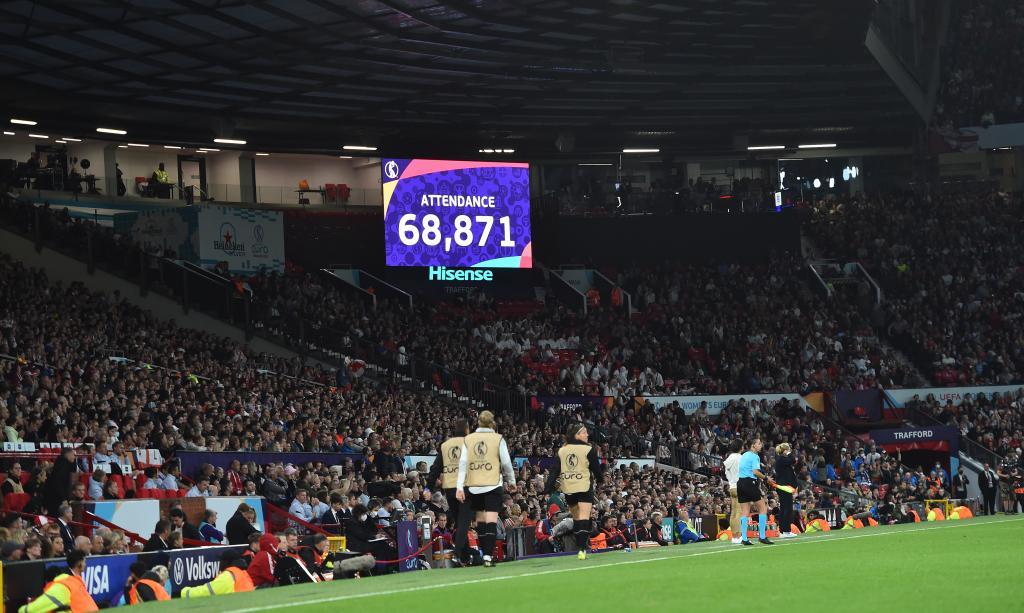England kick off the EURO’s in style
68,000 fans attended a match at Old Trafford on Wednesday evening. One that was of no connection with Manchester United as a club, barring their three players as part of Sarina Wiegman’s England squad.
It was a wonderful opening night for the Lionesses, beating Austria in the opening game of the UEFA Women’s EURO’s, thanks to a goal in the 16th minute from Beth Mead, but this was much more than just a game of football.
It was the start of something special. The start of a first major tournament in England since 2005, which was ironically, also the women’s EURO’s. But this, is currently on another scale.
Contrasting times
Figures have shown that 500,000 tickets have been sold across nine different stadiums for the tournament.
Old Trafford, Wembley, City Academy Stadium, Brentford Community Stadium, Bramall Lane, St Mary’s, the Amex, New York Stadium, Stadium MK, and Leigh Sports Village are all amongst that number.
Compare that to the venues of 2005.
Bloomfield Road, the formerly named City of Manchester Stadium, Ewood Park, Deepdale, and the Halliwell Jones Stadium in Warrington.
The homes of Blackpool, Manchester City, Blackburn Rovers and Preston North End, with the Halliwell Jones home to rugby league side Warrington Wolves.
The venues in itself tell you what you need to know about the growth of the women’s game, thanks to the social changes within society and social media.
Society is much more open to seeing newer events and cultures, with social media being one of the easiest ways to spread awareness off things.
The combined attendance of the semi-finals of the EURO’s in 2005 was just over 8,500.
Last May’s Women’s FA Cup final saw a record attendance in England of 49,094, surpassing the previous year’s crowd of 40,942.
The women’s game is most definitely growing.
Inspiring a generation
The stadiums listed for this summer’s tournament cover a large part of England, making sure every corner of the country feel a part of the EURO’s. The stadiums included represent different areas and backgrounds.
From Yorkshire to Hampshire, there seems to be an aura of involvement from everyone up and down the country. The harsh truth is, the EURO’s of 2005 from an external point of view, now seem like a regional north west England tournament.
That’s how far the women’s game has come. The current scene will most definitely inspire a generation.
In 2021, the BBC and Sky Sports announced a landmark TV rights deal worth around £7-8m, allowing for women’s football to be shown across their channels. Investment like this is what will see women’s football soar through the roof in coming years.
However, the next step of investment must be in girls’ grassroots. They are the next generation of female footballers.









































